Grapefruit Is One of the Weirdest Fruits on the Planet
From its name, to its hazy origins, to its drug interactions, there’s a lot going on beneath that thick rind.
In 1989, David Bailey, a researcher in the field of clinical pharmacology (the study of how drugs affect humans), accidentally stumbled on perhaps the biggest discovery of his career, in his lab in London, Ontario. Follow-up testing confirmed his findings, and today there is not really any doubt that he was correct. “The hard part about it was that most people didn’t believe our data, because it was so unexpected,” he says. “A food had never been shown to produce a drug interaction like this, as large as this, ever.”
That food was grapefruit, a seemingly ordinary fruit that is, in truth, anything but ordinary. Right from the moment of its discovery, the grapefruit has been a true oddball. Its journey started in a place where it didn’t belong, and ended up in a lab in a place where it doesn’t grow. Hell, even the name doesn’t make any sense.
The citrus family of fruits is native to the warmer and more humid parts of Asia. The current theory is that somewhere around five or six million years ago, one parent of all citrus varieties splintered into separate species, probably due to some change in climate. Three citrus fruits spread widely: the citron, the pomelo, and the mandarin. Several others scattered around Asia and the South Pacific, including the caviar-like Australian finger lime, but those three citrus species are by far the most important to our story.
With the exception of those weirdos like the finger lime, all other citrus fruits are derived from natural and, before long, artificial crossbreeding, and then crossbreeding the crossbreeds, and so on, of those three fruits. Mix certain pomelos and certain mandarins and you get a sour orange. Cross that sour orange with a citron and you get a lemon. It’s a little bit like blending and reblending primary colors. Grapefruit is a mix between the pomelo—a base fruit—and a sweet orange, which itself is a hybrid of pomelo and mandarin.
Because those base fruits are all native to Asia, the vast majority of hybrid citrus fruits are also from Asia. Grapefruit, however, is not. In fact, the grapefruit was first found a world away, in Barbados, probably in the mid-1600s. The early days of the grapefruit are plagued by mystery. Citrus trees had been planted casually by Europeans all over the West Indies, with hybrids springing up all over the place, and very little documentation of who planted what, and which mixed with which. Citrus, see, naturally hybridizes when two varieties are planted near each other. Careful growers, even back in the 1600s, used tactics like spacing and grafting (in which part of one tree is attached to the rootstock of another) to avoid hybridizing. In the West Indies, at the time, nobody bothered. They just planted stuff.
Sometimes it didn’t work very well. Many citrus varieties, due to being excessively inbred, don’t even create a fruiting tree when grown from seed. But other times, random chance could result in something special. The grapefruit is, probably, one of these. The word “probably” is warranted there, because none of the history of the grapefruit is especially clear. Part of the problem is that the word “grapefruit” wasn’t even recorded, at least not in any surviving documents, until the 1830s.
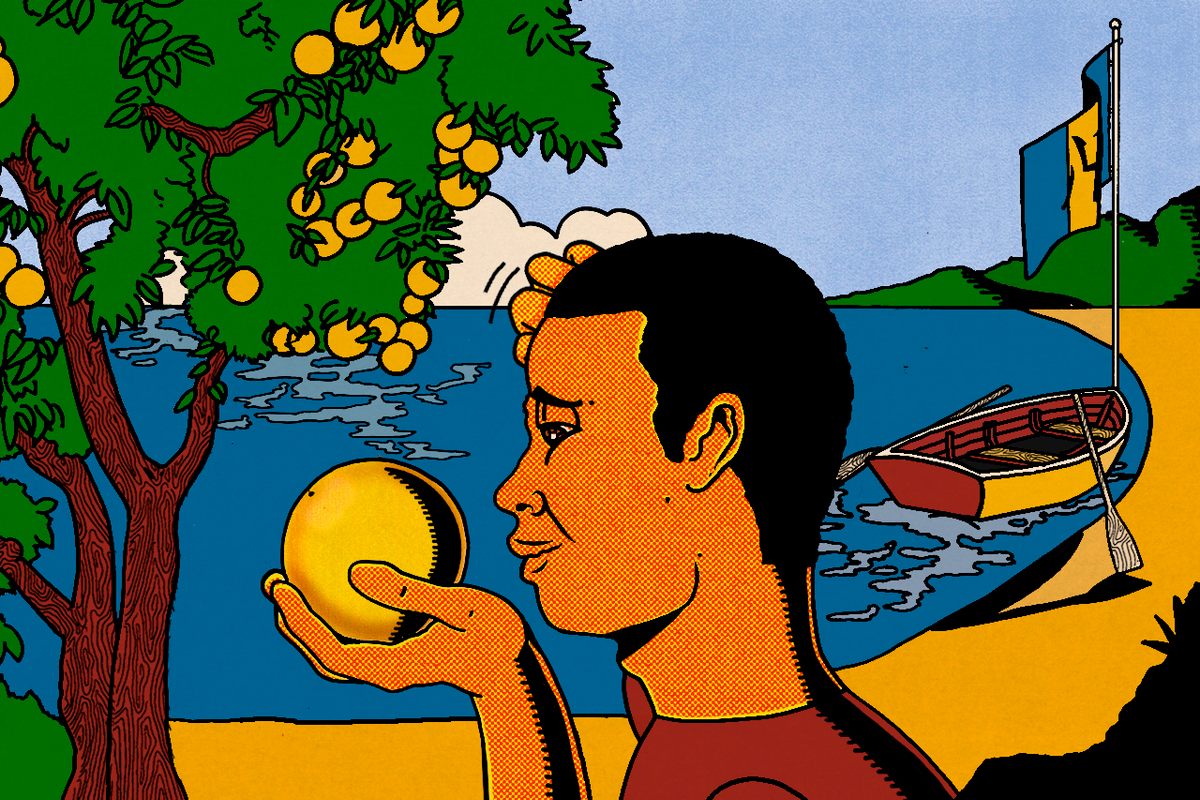
Before that it was known, probably, as the “shaddock,” which is especially confusing, because shaddock is also a word used for the pomelo. (The word may have come from the name of a trader, one Captain Philip Chaddock, who may or may not have introduced the pomelo to the islands.) As a larger, more acidic citrus fruit with an especially thick rind, the pomelo is what provides the bitterness for all bitter citrus fruits to follow, including the grapefruit. In the earliest and best history of the fruits on Barbados, written by Griffith Hughes in 1750, there are descriptions of many of the unusual hybrids that littered Barbados. Those trees include the shaddock, a tree he called the “golden orange,” and one he called the “Forbidden Fruit” tree. It was the latter that Hughes described as the most delicious, and when the grapefruit eventually became easily the most famous and popular citrus of the West Indies, it was widely believed to be the one once called the Forbidden Fruit.
It turns out this may have just been wishful thinking. Some truly obsessive researchers spent years scouring the limited, centuries-old descriptions of citrus leaf shapes and fruit colors, and concluded that of those three interestingly named fruits, the shaddock was the pomelo, the golden orange was actually the grapefruit, and the Forbidden Fruit was actually something else entirely, some other cross, which the researchers think they may have found on Saint Lucia, back in 1990.
Speaking of all these names, let’s discuss the word “grapefruit.” It’s commonly stated that the word comes from the fact that grapefruits grow in bunches, like grapes. There’s a pretty decent chance that this isn’t true. In 1664, a Dutch physician named Wouter Schouden visited Barbados and described the citrus he sampled there as “tasting like unripe grapes.” In 1814, John Lunan, a British plantation and slave owner from Jamaica, reported that this fruit was named “on account of its resemblance in flavour to the grape.”
If you’re thinking that the grapefruit doesn’t taste anything like grapes, you’re not wrong. It’s also documented that there were no vine grapes in Barbados by 1698. That means, according to one theory, that many of the people on the island would not really have known what grapes tasted like. Their only native grape-like plant is the sea grape, which grows in great numbers all around the Caribbean, but isn’t a grape at all. It’s in the buckwheat family, but does produce clusters of fruit that look an awful lot like grapes but aren’t particularly tasty. In fact, they’re quite sour and a little bitter, not unlike the grapefruit.
This is largely guesswork, almost all of it, because citrus is a delightfully chaotic category of fruit. It hybridizes so easily that there are undoubtedly thousands, maybe more, separate varieties of citrus in the wild and in cultivation. Some of these, like the grapefruit, clementine, or Meyer lemon, catch on and become popular. But trying to figure out exactly where they came from, especially if they weren’t created recently in a fruit-breeding lab, is incredibly difficult.
A Frenchman named Odet Philippe is generally credited with bringing the grapefruit to the American mainland, in the 1820s. He was the first permanent European settler in Pinellas County, Florida, where modern-day St. Petersburg* lies. (It took him several attempts; neither the swamp ecology nor the Native people particularly wanted him there.) Grapefruit was Philippe’s favorite citrus fruit, and he planted huge plantations of it, and gave grafting components to his neighbors so they could grow the fruit themselves. (It is thought that Phillippe was Black, but he also purchased and owned enslaved people.) In 1892, a Mainer named Kimball Chase Atwood, having achieved success in the New York City insurance world, moved to the 265 acres of forest just south of Tampa Bay he’d purchased. Atwood burned the whole thing to the ground and started planting stuff, and soon he dedicated the land to his favorite crop: the grapefruit. The dude planted 16,000 grapefruit trees.
Grapefruit, though, is wild, and wants to remain wild. In 1910, one of Atwood’s workers discovered that one tree was producing pink grapefruits; until then, Florida grapefruits had all been yellow-white on the inside. It became a huge success, leading to the patenting of the Ruby Red grapefruit in 1929. Soon Atwood had become the world’s biggest producer of grapefruit, supplying what was considered a luxury product to royalty and aristocracy.
A brutally cold weather cycle in 1835 killed the fledgling citrus industry in the Carolinas and Georgia, and the industry chose to move farther south, where it never got cold. South Florida, though, can be a rather hostile place. By the time of the Civil War, Florida’s population was the lowest of any Southern state, and even that was clustered in its northern reaches. It was the citrus groves down there that enticed anyone to even bother with the broiling, humid, swampy, hurricane-ridden, malarial region. In the late 1800s, railroads were constructed to deliver that citrus—and grapefruit was a huge part of this—to the rest of the country and beyond. One of those railroads was even called the Orange Belt Railway.

The railroads made South Florida accessible to more people, and in the 1920s, developers began snapping up chunks of the state and selling them as a sunny vacation spot. It worked, and the state’s population swelled. Florida as we know it today exists because of citrus.
Grapefruit maintained its popularity for the following decades, helped along by the Grapefruit Diet, which has had intermittent waves of popularity starting in the 1930s. (Many of these diets required eating grapefruits as the major part of an extremely low-calorie diet. It probably works, in that eating 500 calories a day generally results in weight loss, but it’s widely considered unsafe.) Grapefruit has long been associated with health. Even in the 1800s and before, early chroniclers of fruit in the Caribbean described it as being good for you. Perhaps it’s something about the combination of bitter, sour, and sweet that reads as vaguely medicinal.
This is especially ironic, because the grapefruit, as Bailey would show, is actually one of the most destructive foes of modern medicine in the entire food world.
Bailey works with the Canadian government, among others, testing various medications in different circumstances to see how humans react to them. In 1989, he was working on a blood pressure drug called felodipine, trying to figure out if alcohol affected response to the drug. The obvious way to test that sort of thing is to have a control group and experimental group—one that takes the drug with alcohol and one that takes it with water or nothing at all. But good clinical science calls for the study to be double-blind—that is, that both the tester and subjects don’t know which group they belong to. But how do you disguise the taste of alcohol so thoroughly that subjects don’t know they’re drinking it?
“It was really my wife Barbara and I, one Saturday night, we decided to try everything in the refrigerator,” says Bailey. They mixed pharmaceutical-grade booze with all kinds of juices, but nothing was really working; the alcohol always came through. “Finally at the very end, she said, ‘You know, we’ve got a can of grapefruit juice. Why don’t you try that?’ And by golly, you couldn’t tell!” says Bailey. So he decided to give his experimental subjects a cocktail of alcohol and grapefruit juice (a greyhound, when made with vodka), and his control group a glass of unadulterated grapefruit juice.
The blinding worked, but the results of the study were … strange. There was a slight difference in blood pressure between the groups, which isn’t that unusual, but then Bailey looked at the amount of the drug in the subjects’ bloodstreams. “The levels were about four times higher than I would have expected for the doses they were taking,” he says. This was true of both the control and experimental groups. Bailey checked every possible thing that could have gone wrong—his figures, whether the pharmacist gave him the wrong dosage—but nothing was off. Except the grapefruit juice.
Bailey first tested a new theory on himself. Felodipine doesn’t really have any ill effects at high dosage, so he figured it’d be safe, and he was curious. “I remember the research nurse who was helping me, she thought this was the dumbest idea she’d ever heard,” he recalls. But after taking his grapefruit-and-felodipine cocktail, his bloodstream showed that he had a whopping five times as much felodipine in his system than he should have had. More testing confirmed it. Grapefruit was screwing something up, and screwing it up good.
Eventually, with Bailey leading the effort, the mechanism became clear. The human body has mechanisms to break down stuff that ends up in the stomach. The one involved here is cytochrome P450, a group of enzymes that are tremendously important for converting various substances to inactive forms. Drugmakers factor this into their dosage formulation as they try to figure out what’s called the bioavailability of a drug, which is how much of a medication gets to your bloodstream after running the gauntlet of enzymes in your stomach. For most drugs, it is surprisingly little—sometimes as little as 10 percent.
Grapefruit has a high volume of compounds called furanocoumarins, which are designed to protect the fruit from fungal infections. When you ingest grapefruit, those furanocoumarins take your cytochrome P450 enzymes offline. There’s no coming back. Grapefruit is powerful, and those cytochromes are donezo. So the body, when it encounters grapefruit, basically sighs, throws up its hands, and starts producing entirely new sets of cytochrome P450s. This can take over 12 hours.
This rather suddenly takes away one of the body’s main defense mechanisms. If you have a drug with 10 percent bioavailability, for example, the drugmakers, assuming you have intact cytochrome P450s, will prescribe you 10 times the amount of the drug you actually need, because so little will actually make it to your bloodstream. But in the presence of grapefruit, without those cytochrome P450s, you’re not getting 10 percent of that drug. You’re getting 100 percent. You’re overdosing.
And it does not take an excessive amount of grapefruit juice to have this effect: Less than a single cup can be enough, and the effect doesn’t seem to change as long as you hit that minimum.
None of this is a mystery, at this point, and it’s shockingly common. Here’s a brief and incomplete list of some of the medications that research indicates get screwed up by grapefruit:
- Benzodiazepines (Xanax, Klonopin, and Valium)
- Amphetamines (Adderall and Ritalin)
- Anti-anxiety SSRIs (Zoloft and Paxil)
- Cholesterol-lowering statins (Lipitor and Crestor)
- Erectile-dysfunction drugs (Cialis and Viagra)
- Various over-the-counter meds (Tylenol, Allegra, and Prilosec)
- And about a hundred others.
In some of these cases, the grapefruit interaction is not a big deal, because they’re safe drugs and even having several times the normal dosage is not particularly dangerous. In other cases, it’s exceedingly dangerous. “There are a fair number of drugs that have the potential to produce very serious side effects,” says Bailey. “Kidney failure, cardiac arrhythmia that’s life-threatening, gastrointestinal bleeding, respiratory depression.” A cardiac arrhythmia messes with how the heart pumps, and if it stops pumping, the mortality rate is about 20 percent. It’s hard to tell from the statistics, but it seems all but certain that people have died from eating grapefruit.

This is even more dangerous because grapefruit is a favorite of older Americans. The grapefruit’s flavor, that trademark bitterness, is so strong that it can cut through the decreased taste sensitivity of an aged palate, providing flavor for those who can’t taste a lot of other foods very well. And older Americans are also much more likely to take a variety of pills, some of which may interact with grapefruit.
Despite this, the Food and Drug Administration does not place warnings on many of the drugs known to have adverse interactions with grapefruit. Lipitor and Xanax have warnings about this in the official FDA recommendations, which you can find online and are generally provided with every prescription. But Zoloft, Viagra, Adderall, and others do not. “Currently, there is not enough clinical evidence to require Zoloft, Viagra, or Adderall to have a grapefruit juice interaction listed on the drug label,” wrote an FDA representative in an email.
This is not a universally accepted conclusion. In Canada, where Bailey lives and works, warnings are universal. “Oh yeah, it’s right on the prescription bottles, in patient information,” he says. “Or they have a yellow sticker that says, ‘Avoid consumption of grapefruit when taking this drug.’”
But in the United States, there’s no way a patient would know that many exceedingly common drugs should absolutely not be taken with an exceedingly common fruit. It is unclear whether a patient is expected to know that grapefruit has an interaction with many drugs. Should patients Google “drug I take” with “food I eat” in every possible configuration? The FDA only recommends patients talk to their doctors about food-drug interactions, and that can be a lot of ground to cover.
This interaction, by the way, seems to affect all of the bitter citruses—the ones that inherited the telltale tang from the pomelo. Sour orange. Lime, too. But it’s unlikely that anyone would drink enough sour orange or lime juice to have this effect, given how sour it is. Grapefruit, on the other hand, is far more palatable in large doses.
Bailey, though he doesn’t particularly like grapefruit, notes that there’s nothing inherently wrong with the fruit. There’s plenty of really helpful, healthy stuff in a grapefruit, especially vitamin C, which it has in spades. He just makes the case that in a time when more than half of Americans take multiple pills per day, and 20 percent take five or more, grapefruit-drug interactions are just something everyone should know about.
The United States produces more grapefruit than any other country, from Florida and now California as well (and elsewhere, though in smaller quantities). The industry is not unaware of this issue. In fact, citrus growers have been working for more than a decade on a variety of grapefruit that doesn’t interfere with drugs. But the industry has more pressing problems, especially the disease called huanglongbing, or citrus greening, that’s ravaging groves, and the citrus lobby certainly doesn’t want more drugs labeled “Do not take with grapefruit.”
From its largely mysterious birth on an island halfway across the world from its parents, the grapefruit has had an unusual journey to the modern world. It fueled the growth and development of South Florida, has spearheaded many an attempt at healthy eating, and has almost certainly killed people. Still delicious and refreshing, though.
* Correction: This story originally suggested that Tampa is in Pinellas County. It is in Hillsborough County.
Gastro Obscura covers the world’s most wondrous food and drink.
Sign up for our regular newsletter.



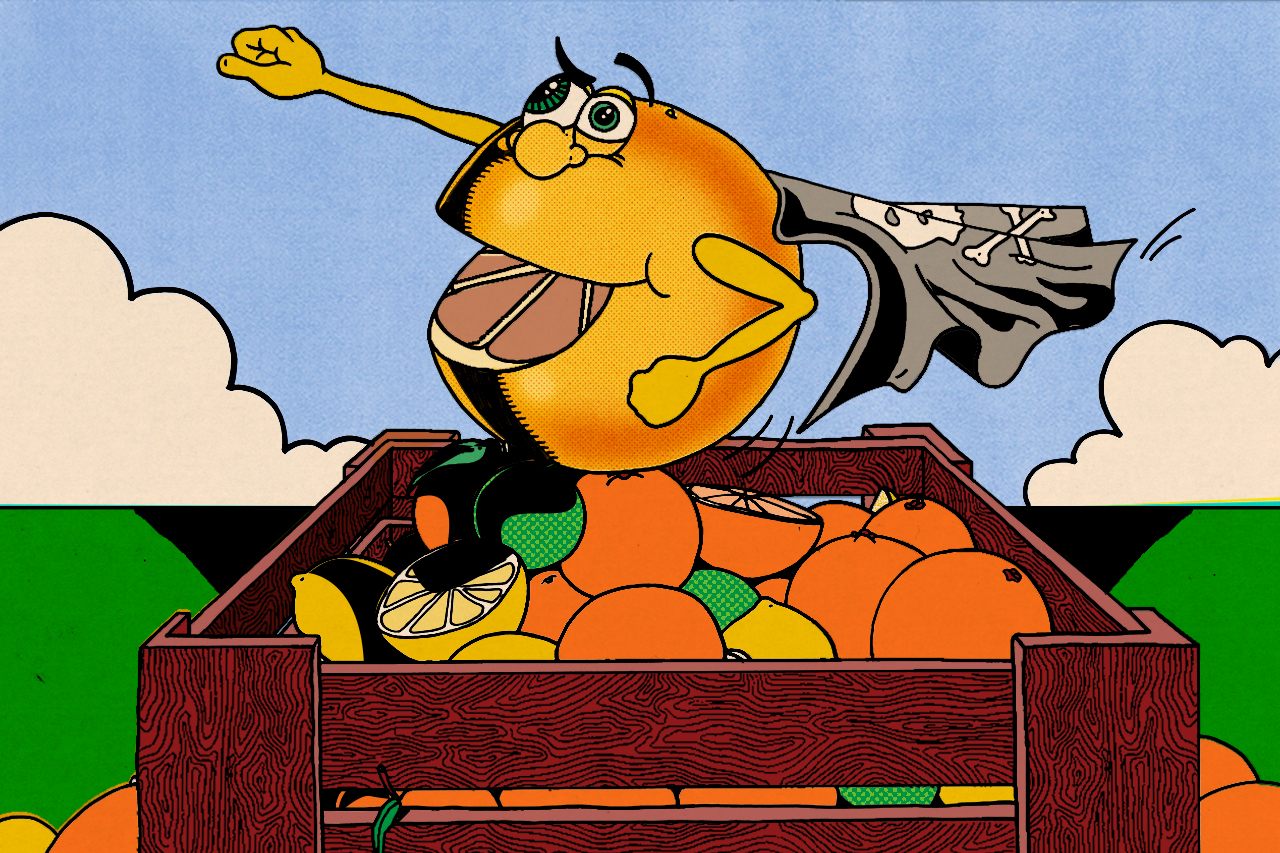




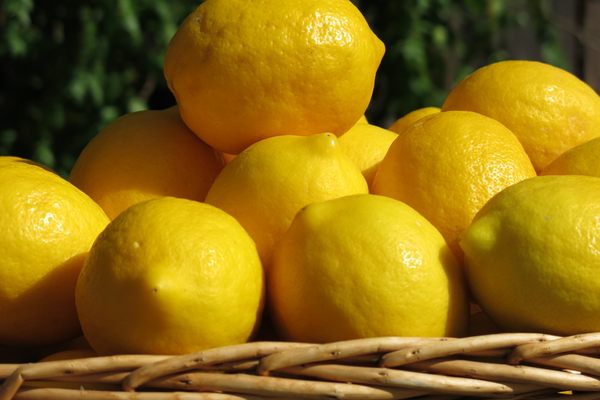



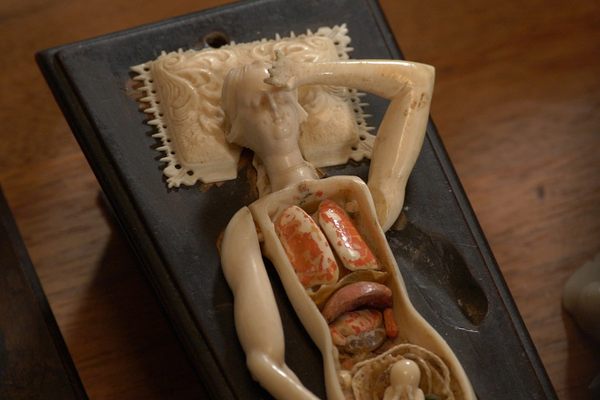



































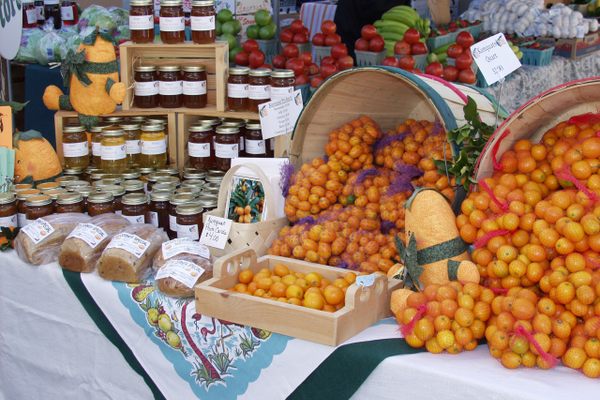


Follow us on Twitter to get the latest on the world's hidden wonders.
Like us on Facebook to get the latest on the world's hidden wonders.
Follow us on Twitter Like us on Facebook